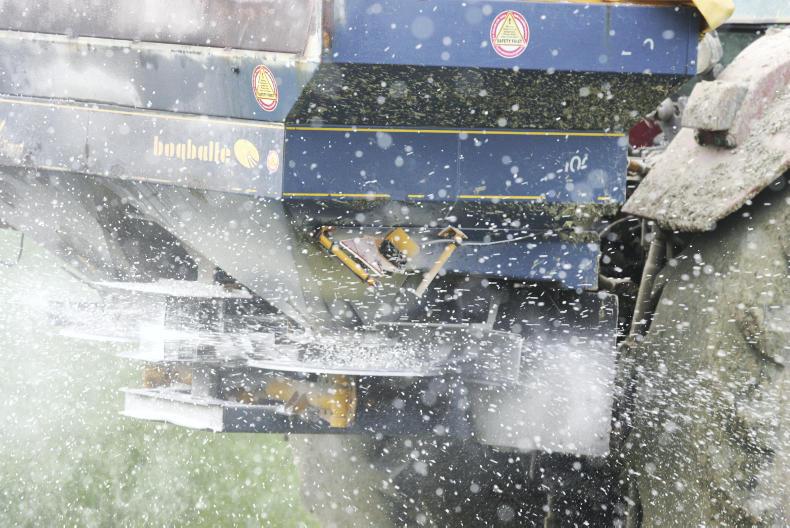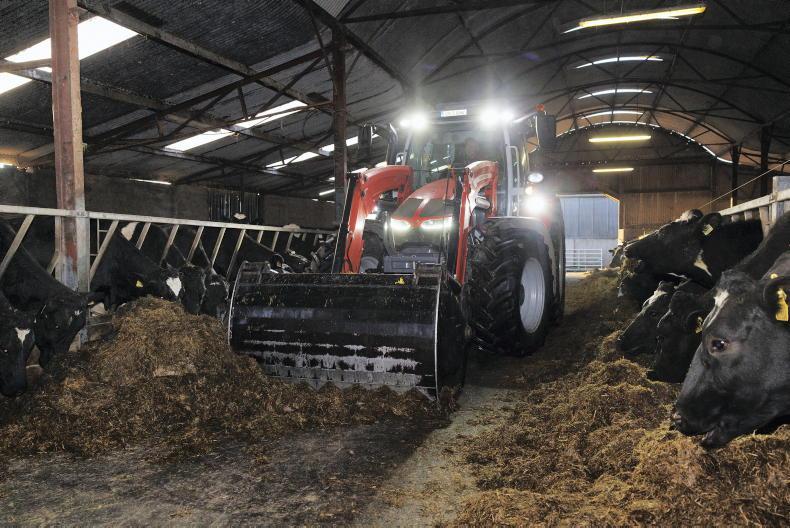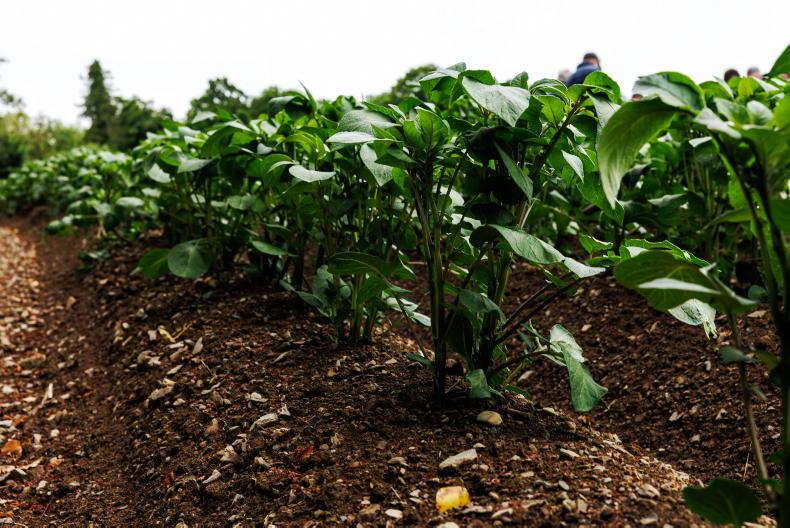The past week has been very wet and cold around the country, with mean air temperatures hovering somewhere between one and two degrees below average.
Rainfall amounts over the past week were about normal in the southeast, but nearly three times higher than average in Connacht and west Ulster.
The Met Éireann forecast for this coming week suggests it will be drier and milder, with most areas experiencing some settled conditions for the first half of the week.
However, some patchy outbreaks of rain and drizzle may occur again from Wednesday onwards and will most likely be concentrated along Atlantic coasts.
Ground conditions
Most soils remain saturated at this point, especially in the south, west and north. Field work is confined mainly to the east or on free-draining land. With a more favourable forecast for the week ahead, ground conditions are expected to improve, albeit only slightly.
Straw
Thousands of acres of straw remain in the fields waiting to be baled or chopped. This won’t be the first time that some areas have seen straw baled in February. On the last occasion it was the latter end of the month before conditions allowed balers to move in.
Straw quality remains variable. Swards which have remained untouched since harvest have largely avoided rotting and will most likely be of sufficient quality to be used for bedding on livestock farms. Straw which has been tossed once or twice since harvest will have lost bulk and may have begun to decay.
A number of fields of straw have been turned in the past two weeks in the south of the country, in the anticipation of settled weather. However, caution is advised as quality may deteriorate if freshly tossed swards are subject to substantial amounts of rain.
Spring nitrogen
The time to consider the first application of nitrogen on winter crops draws closer. Rape and barley are the first priority. Some growers have noticed yellowing in their winter barley fields, which could indicate the need for N.
Winter barley crops require their first N application before growth stage 30. This generally falls between late February and mid-Mach, when significant spring growth kicks in. However, every field, crop, area and year differ, so growers must walk their fields regularly to judge the optimum time for application.
Winter oilseed rape N requirements and timings depend on how much additional canopy growth is needed and can be partially judged by assessing its green area index (GAI) using various smartphone apps.
A GAI of 0.5 is considered backward and could be the result of extensive grazing by pigeons or pests, or very late planting. A light dressing of 30kg N/ha should be applied very soon, with the balance of canopy requirement in the coming weeks.
A GAI of 0.5 to 1.5 is considered normal. One third of total N requirement should be applied in mid-March. This ranges from 40kg and 75kg N/ha, depending on rotation and soil type.
Anything beyond 1.5 from the end of February onwards is considered large and the first application of N should be delayed until late March.
With the afternoon temperatures expected to range from 8°C to 11-12°C this week, the first real signs of spring growth may begin to appear.
Read more
Tillage management: land conditions, markets and planting
Tillage management: drying, beans and oilseed rape
The past week has been very wet and cold around the country, with mean air temperatures hovering somewhere between one and two degrees below average.
Rainfall amounts over the past week were about normal in the southeast, but nearly three times higher than average in Connacht and west Ulster.
The Met Éireann forecast for this coming week suggests it will be drier and milder, with most areas experiencing some settled conditions for the first half of the week.
However, some patchy outbreaks of rain and drizzle may occur again from Wednesday onwards and will most likely be concentrated along Atlantic coasts.
Ground conditions
Most soils remain saturated at this point, especially in the south, west and north. Field work is confined mainly to the east or on free-draining land. With a more favourable forecast for the week ahead, ground conditions are expected to improve, albeit only slightly.
Straw
Thousands of acres of straw remain in the fields waiting to be baled or chopped. This won’t be the first time that some areas have seen straw baled in February. On the last occasion it was the latter end of the month before conditions allowed balers to move in.
Straw quality remains variable. Swards which have remained untouched since harvest have largely avoided rotting and will most likely be of sufficient quality to be used for bedding on livestock farms. Straw which has been tossed once or twice since harvest will have lost bulk and may have begun to decay.
A number of fields of straw have been turned in the past two weeks in the south of the country, in the anticipation of settled weather. However, caution is advised as quality may deteriorate if freshly tossed swards are subject to substantial amounts of rain.
Spring nitrogen
The time to consider the first application of nitrogen on winter crops draws closer. Rape and barley are the first priority. Some growers have noticed yellowing in their winter barley fields, which could indicate the need for N.
Winter barley crops require their first N application before growth stage 30. This generally falls between late February and mid-Mach, when significant spring growth kicks in. However, every field, crop, area and year differ, so growers must walk their fields regularly to judge the optimum time for application.
Winter oilseed rape N requirements and timings depend on how much additional canopy growth is needed and can be partially judged by assessing its green area index (GAI) using various smartphone apps.
A GAI of 0.5 is considered backward and could be the result of extensive grazing by pigeons or pests, or very late planting. A light dressing of 30kg N/ha should be applied very soon, with the balance of canopy requirement in the coming weeks.
A GAI of 0.5 to 1.5 is considered normal. One third of total N requirement should be applied in mid-March. This ranges from 40kg and 75kg N/ha, depending on rotation and soil type.
Anything beyond 1.5 from the end of February onwards is considered large and the first application of N should be delayed until late March.
With the afternoon temperatures expected to range from 8°C to 11-12°C this week, the first real signs of spring growth may begin to appear.
Read more
Tillage management: land conditions, markets and planting
Tillage management: drying, beans and oilseed rape









SHARING OPTIONS